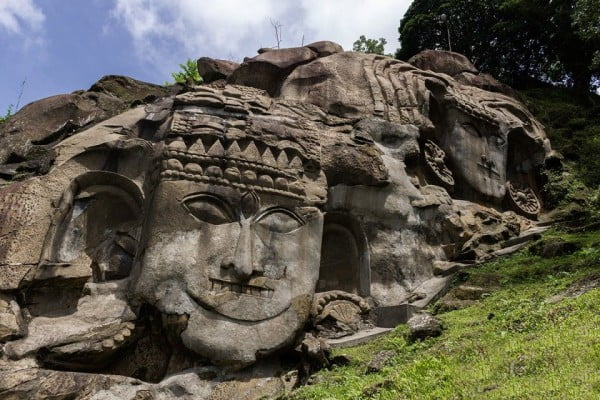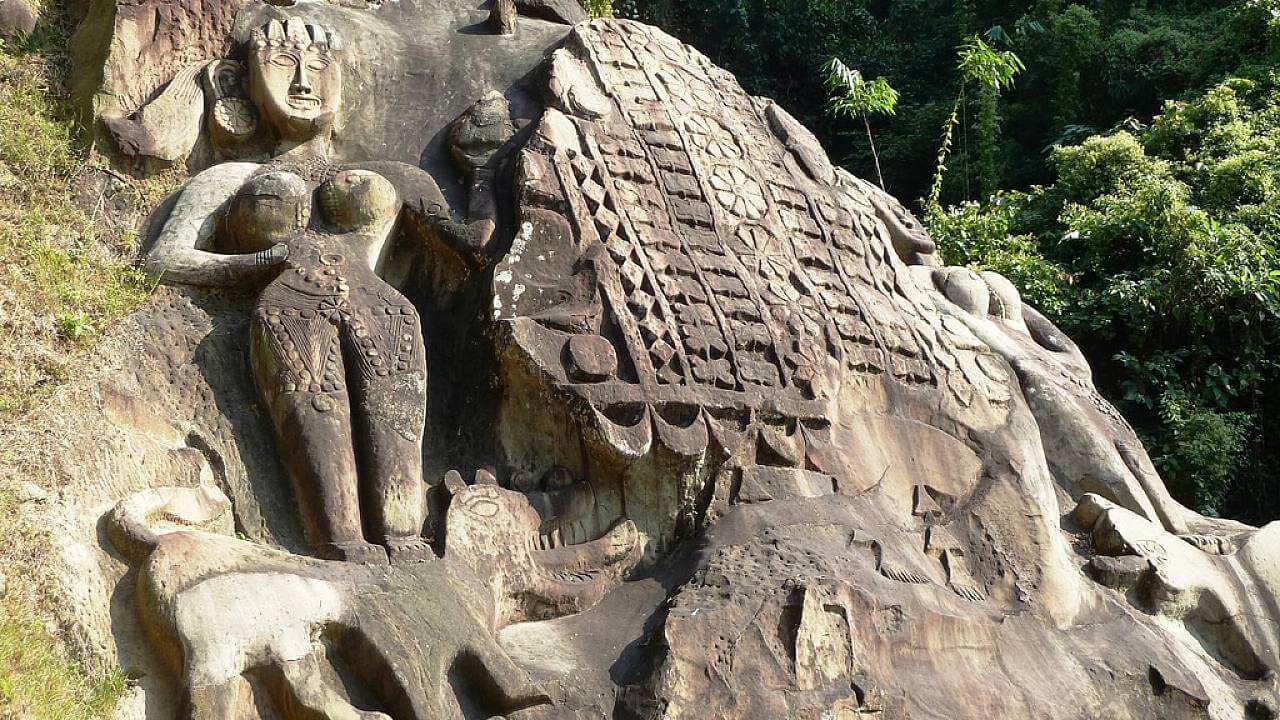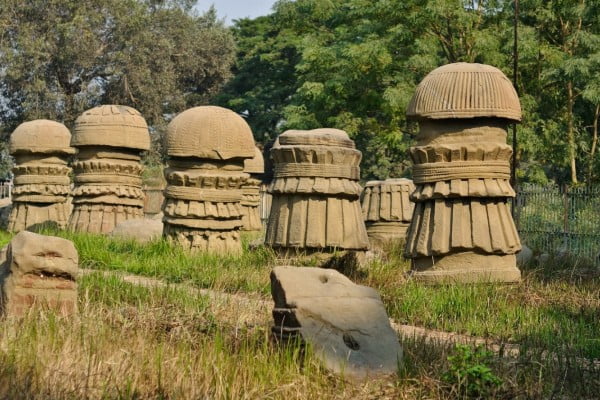Disclaimer: Originally published in June 2017. It is being republished since it still remains an interesting topic till today.
India is undoubtedly a land of mysteries and secrets – be it the red rain of Idukki or suicidal birds at Jatinga, Assam.

It would never have crossed your mind that a small state like Tripura can hold one of the biggest secrets to the civilization of this country. In Unakoti, we find some important questions that have to be answered.
Who made these figures? Where were the people? Was Unakoti ever a settlement? If yes, where are the remnants of the past, now?
Unakoti

Unakoti lies 178 km to the northeast of Agartala (for ignorant Indians, it is the capital of Tripura). Commuting there is easy as it is connected with railroads, the nearest railway station being 20 km away.
Unakoti really means “one less than a crore” in Bengali.
The Hill has been a Shaivaite pilgrimage spot since the 7th-9th centuries.
Apart from the mountains, what really attracts the attention of people is the marvelous carvings on the base of the mountains.
These carvings depict various gods and goddesses, mostly associated with Shaivism.
But there is a problem – no one really knows how these rock carvings came into existence. No one even knows who made them because they haven’t been marked, and there has been no proper exhaustive study on this architectural marvel.
Also read: Mysteries, Paranormal Activities, Exorcisms, Possessed People, Curses: 5 Intriguing Stories of India
Local legends
We can always expect the local populace to have some or the other story about the existence of their surroundings. And Unakoti cannot be left far behind on this.
1. According to Hindu mythology, Shiva was going to Kashi (Varanasi) with one crore gods and goddesses including himself, when at night all the gods decided to rest at a small hill in Tripura. Shiva asked everyone to wake up the next morning, despite the tiredness because they had a long distance to cover.
The next morning, it was only Shiva who woke up on the given time. Angry with the carelessness of the remaining gods and goddesses, he cursed all of them to become stone images.
Therefore, the name Unakoti – one less than a crore of gods (excluding Shiva) were turned to stone sculptures.
2. The locals believe that a sculptor named Kallu Kumhar was the brain behind these stone carvings. Kallu Kumhar was a devotee of Shiva and Parvati, and wanted to accompany them to Mount Kailash. Shiva refused it, but he had to give in to Parvati’s insistence. But he placed a condition over his agreement – the sculptor was supposed to carve figures of one crore gods in a night.
Morning arrived but Kallu was one less sculpture less than his given target. As a result of which he was refused entry to Mount Kailash.
3. Deriving from the figure of Kallu Kumar is another legend – Kallu was given the task of carving one crore gods and goddesses in a dream. However, Kallu Kumhar carved out his figure among those of the deities. Hence the figures of gods is one less, because there is a human sculpture among them.
While all this is mythical speculation of the existence of such carvings, no one really knows the actual answers. The Archaeological Survey of India has allowed this rich heritage site to go into absolute neglect.
If we can find the sculptors behind the carvings or the time period of them, we can actually trace the areas to which the cult of Shaivism was spread. And added to that, we can actually discover a new civilization, and their Mayan-like disappearance.
Image Credits: Google Images
Sources: Wikipedia, Times Of India
Other Recommendations:
No One Has Been Able To Solve The Mystery Behind The Indian Rope Trick































